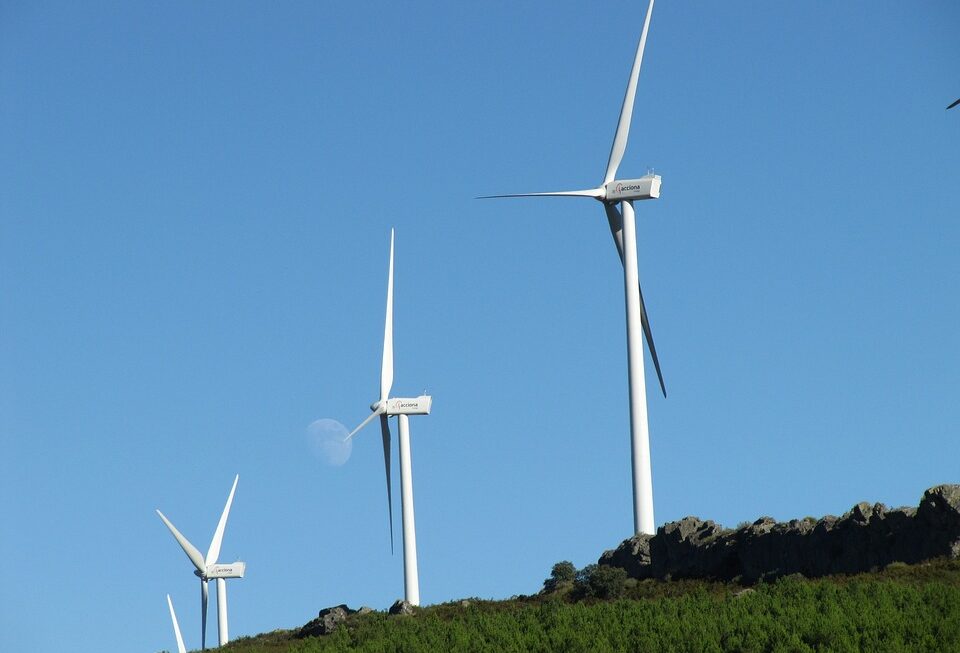[ad_1]
Tapping into the Power of the Oceans: The Advantages of Tidal Energy
The world is facing a global energy crisis with depleting fossil fuel reserves and the increasing effects of climate change. It is becoming imperative for us to find clean and renewable sources of energy to power our future. One such source of energy that has been gaining attention in recent years is tidal energy. Tidal energy is generated by harnessing the natural movement of the ocean tides, and it has the potential to provide a significant amount of clean and renewable energy to power our world.
In this article, we will take a closer look at the advantages of tidal energy and how it can be harnessed to meet our growing energy needs.
What is Tidal Energy?
Tidal energy is a form of renewable energy that is generated by harnessing the natural movement of the ocean tides. The gravitational pull of the moon and the sun causes the water in the oceans to rise and fall in a predictable pattern, creating the tides. This movement of the tides can be harnessed to generate electricity using various technologies such as tidal turbines, tidal barrages, and tidal lagoons.
Advantages of Tidal Energy
There are several advantages to using tidal energy as a source of renewable energy.
1. Predictable and reliable
One of the main advantages of tidal energy is that it is predictable and reliable. The movement of the tides is driven by the gravitational pull of the moon and the sun, which follows a predictable pattern. Unlike other forms of renewable energy such as wind and solar, tidal energy is not dependent on weather conditions, making it a more reliable source of energy.
2. High energy density
Tidal energy has a high energy density, meaning that a large amount of energy can be extracted from a relatively small area. This makes it a more efficient source of energy compared to other forms of renewable energy such as wind and solar.
3. Low environmental impact
Tidal energy has a low environmental impact compared to traditional forms of energy such as fossil fuels. It does not produce greenhouse gas emissions or other pollutants that contribute to climate change and air pollution. Tidal energy also does not require the use of fuel, so there are no risks of oil spills or other environmental disasters associated with its use.
4. Long lifespan
Tidal energy infrastructure has a long lifespan, with some tidal turbines and barrages having a lifespan of over 100 years. This means that once the infrastructure is in place, it can continue to generate energy for many years with minimal maintenance.
5. Job creation and economic benefits
The development of tidal energy projects can create jobs and stimulate economic growth in the regions where they are located. This can provide a boost to local economies and help to create a more sustainable and resilient energy infrastructure.
Challenges of Tidal Energy
While there are many advantages to using tidal energy, there are also some challenges that need to be addressed in order to fully realize its potential.
1. High upfront costs
The development of tidal energy projects requires significant upfront investment in infrastructure and technology. While the long-term operating costs may be low, the initial capital costs can be a barrier to the widespread deployment of tidal energy.
2. Environmental impact
Tidal energy projects can have some environmental impact, particularly during the construction phase. It is important to carefully consider the potential effects on marine ecosystems and local communities when planning and developing tidal energy projects.
3. Limited availability
Tidal energy is only available in coastal areas with strong tidal currents, limiting its potential for widespread deployment. This means that it may not be a viable option for some regions that are located further inland or do not experience strong tides.
How Tidal Energy is Harnessed
There are several ways to harness tidal energy, each with its own advantages and disadvantages.
Tidal Turbines
Tidal turbines are similar to wind turbines, but instead of using the power of the wind to generate electricity, they use the power of the tides. Tidal turbines are typically placed on the seafloor in areas with strong tidal currents, where they can generate electricity as the tides flow past them. Tidal turbines can be installed individually or as part of a larger array, and they can be designed to operate in both shallow and deep water.
Tidal Barrages
Tidal barrages are large dams that are built across a river estuary or bay. As the tide comes in, it fills the area behind the barrage, creating a difference in water level between the two sides. This difference in water level can be used to drive turbines and generate electricity as the water flows back out to sea during low tide. Tidal barrages can generate a significant amount of electricity, but they can also have a significant impact on the local environment and marine ecosystems.
Tidal Lagoons
Tidal lagoons are similar to tidal barrages, but they are typically smaller in scale and are built as standalone structures rather than across a river estuary or bay. Tidal lagoons can be constructed in shallow coastal areas, where they can take advantage of the rise and fall of the tides to generate electricity. Tidal lagoons are a relatively new technology, and there are ongoing research and development efforts to improve their efficiency and reduce their environmental impact.
FAQs about Tidal Energy
Q: What is the potential for tidal energy to meet our future energy needs?
A: Tidal energy has the potential to provide a significant amount of clean and renewable energy. According to the European Commission, tidal energy could potentially meet up to 10% of Europe’s electricity demand by 2050. While it may not be able to meet all of our energy needs on its own, tidal energy can play a significant role in helping to reduce our reliance on fossil fuels and mitigate the effects of climate change.
Q: How does tidal energy compare to other forms of renewable energy?
A: Tidal energy has several advantages over other forms of renewable energy, such as predictability, reliability, and high energy density. However, it also has some limitations, such as limited availability and high upfront costs. It is important to consider the specific characteristics of each form of renewable energy and how they can complement each other in meeting our energy needs.
Q: What are the environmental impacts of tidal energy?
A: Tidal energy projects can have some environmental impact, particularly during the construction phase. It is important to carefully consider the potential effects on marine ecosystems and local communities when planning and developing tidal energy projects. There are ongoing research and development efforts to minimize the environmental impact of tidal energy and ensure that it can be deployed in a sustainable and responsible manner.
Q: What is being done to advance the development of tidal energy technology?
A: There are ongoing research and development efforts to advance the development of tidal energy technology, including improving the efficiency of tidal turbines, reducing the environmental impact of tidal barrages and lagoons, and developing new technologies for harnessing tidal energy. Governments, research institutions, and industry partners are working together to support the continued advancement of tidal energy technology and its deployment on a commercial scale.
Q: What are some of the challenges facing the widespread deployment of tidal energy?
A: Some of the challenges facing the widespread deployment of tidal energy include high upfront costs, limited availability, and environmental impact. It is important to address these challenges through continued research and development, policy support, and collaboration between government, industry, and academia to create a more conducive environment for the deployment of tidal energy.
In conclusion, tidal energy has the potential to provide a significant amount of clean and renewable energy to power our future. It offers several advantages over other forms of renewable energy, including predictability, reliability, and high energy density. While there are still some challenges to be addressed, ongoing research and development efforts are working to advance the development of tidal energy technology and ensure its deployment in a sustainable and responsible manner. As we continue to explore new sources of renewable energy, tidal energy has the potential to play a significant role in helping to meet our growing energy needs and mitigate the effects of climate change.
[ad_2]



